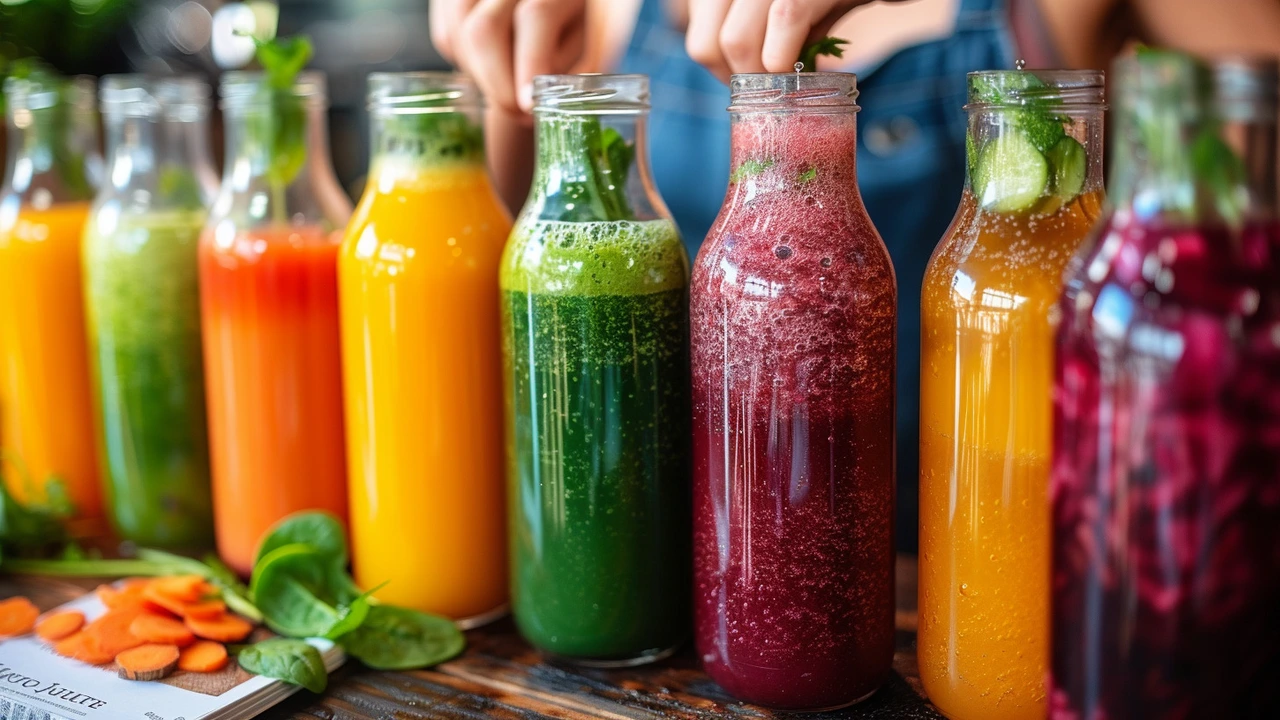Want a fast nutrition boost without complicated recipes? Health juices can deliver vitamins, hydration, and a fresh flavor kick—if you make them the right way. This guide gives quick, useful tips you can use today: what to blend, what to avoid, simple recipes, and storage hacks that actually work.
Why try juice at home? Fresh juice gives a concentrated dose of vitamins and antioxidants that your body absorbs fast. That’s great after a workout, during a low-energy afternoon, or when you want an easy way to add more fruits and veggies. But store-bought juices often hide added sugar and calories, so homemade is usually better.
Start with mostly vegetables and add a little fruit for sweetness. For example, cucumber + spinach + apple is a low-sugar, high-hydration mix. Keep a rough ratio: 2 parts vegetables to 1 part fruit. Add a small piece of ginger or a squeeze of lemon for flavor and digestion support. If you want fiber, blend instead of juicing; toss the pulp into smoothies, soups, or muffin batter.
Use whole, ripe produce. Overripe fruit makes very sweet juice; underripe veggies can taste bitter. Wash everything well, and peel citrus if you don’t like the pith. If you have a blender but no juicer, blend with a bit of water and strain through a fine sieve or cheesecloth for a similar result.
Try these quick combos: 1) Green Glow: kale, cucumber, green apple, lemon. 2) Morning Boost: carrot, orange, turmeric. 3) Calm & Clear: beet, apple, ginger. Drink a small glass (6–8 oz) with a meal or after exercise. Avoid drinking large quantities on an empty stomach if you’re sensitive to fruit acids or sugar spikes.
Storage matters: fresh juice is best within 24–48 hours. Store in an airtight glass jar in the fridge and fill it to the top to limit air. For longer life, freeze portions in ice cube trays and thaw as needed.
Who should be careful? People with diabetes, kidney issues, or certain medication interactions (notably grapefruit) should check with a clinician before adding regular fresh juice. If you’re on a military or family health plan, mention any major diet changes at your next check-in—small changes can affect medications or lab results.
Think of juice as a useful tool, not a meal replacement. Pair a small glass with protein or fiber to steady your blood sugar. If you want more ideas, check related posts like “Health Juice at Home” and “Hidden Health Juice Benefits” for step-by-step recipes and deeper tips. Try one simple recipe this week and notice how you feel—small, sensible changes add up fast.

Hello there! If you're new to the world of health juices, then you're in the right place. This guide will introduce you to an array of refreshing, nutritious juices and their amazing health benefits. Not just that, but we'll also elaborate on simple recipes you can whip up right in your kitchen. Dive in and be prepared to be flooded with all the healthy inspiration you need!
Read More